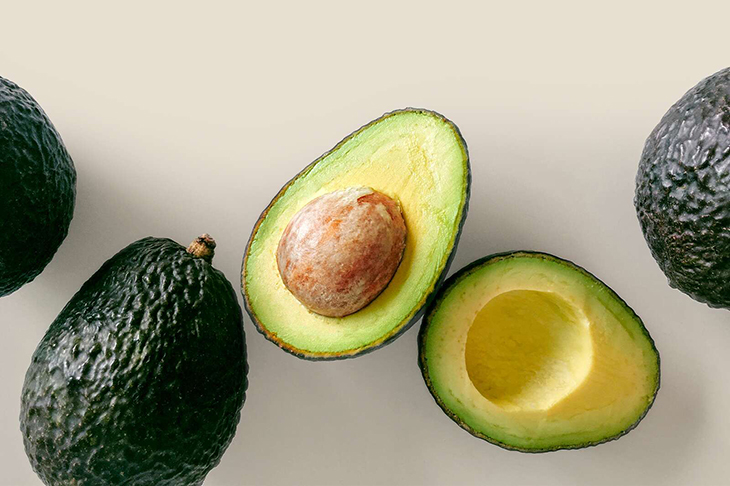
There’s the latest craze happening in social media, and it has gone viral. However, it may actually not be as healthy people think it is. By storing avocado in a bowl of water, this could spread pathogens that cause foodborne illness. This is a recipe for disaster, and one that everyone needs to be aware of.
Everyone always appreciates a good kitchen hack. In fact, they’re constantly in search of the best one out there. But do avocados really stay fresh for a month? This may sound too good, and perhaps, even a little too impossible to believe.
Lately, the experts from the FDA have got a reaction against the now popular TikTok and Facebook trend that shows people storing whole or cut avocados in water. They say that this helps keep the fruit fresh longer. In a video that was released, the TikTok user @sidneyraz stored half an avocado in a container of water. She did this overnight and saw that it was still ripe and green. Another user named @shamamamahealing, on the other hand, stored an uncut version in a jar filled with water and placed it in the fridge. She saw that it was still smooth and green inside after leaving it for two weeks. The latter’s video quickly went viral. In fact, it garnered a total of six million views before it was taken down. This was what Newsweek reported.
At first, the science behind it all made perfect sense. Yes, avocados do turn brown when exposed to oxygen. This is what’s called oxidation, says Matt Regusci. He is the director of growth at ASI Food Safety, a consulting firm in St. Anne, Missouri. The establishment specializes in food safety inspections and certification. “The same thing happens with apples and potatoes,” he shared. “There is nothing wrong with the browning as far as a health risk is concerned, it just doesn’t look good.”
When avocados are kept in water, these people have claimed that you’re slowing down the oxidation process and as a result, you maintain the ripeness and greenness of the fruit for longer periods of time. However, the truth is that this is far from the truth. According to the U.S. Food and Drug Administration (FDA), this could actually be detrimental to health. As @sidneyraz exclaimed in a video that later retracted his previous advice: “Take the avocados out of the water!”
Risks Involved with Storing Cut Avocados in Water
Yes, water helps preserve the fruit’s freshness and flavor, but it can also expose people to a variety of foodborne illnesses. “The main concern is the possibility that any residual human pathogens (such as Listeria monocytogenes and Salmonella) that may be residing on the avocado’s surface may potentially multiply during the storage when submerged in water,” said Jannell Goodwin, a spokesperson for the FDA.
Past research has been made by the FDA. This exhibited that around 17 percent of imported and domestic avocados had been home to traces of Listeria monocytogenes on the skin, and around 1 percent had tested the presence of Salmonella. According to the U.S. Department of Agriculture (USDA), Listeria monocytogenes is the perpetrator behind problems such as fever, muscle aches, nausea, and diarrhea; Salmonella, on the other hand, brings fever, diarrhea, and abdominal cramps. When nothing is done about these, it can result to severe illness and even death to those who have weak immune systems. As for Listeria monocytogenes, this can be especially dangerous for pregnant women, newborns, and the older members of society.
“Bacteria like listeria and salmonella are living creatures. They need the right temperature, food, and most importantly water to grow,” shared Regusci. “When you cut into an avocado, split it in half, then submerge it in water, you provide the perfect environment to create a pathogenic soup.”
Even if you leave the avocados whole before soaking these in water, it can still be very risky. As a matter of fact, whole and washed avocados may still have traces of bacteria that seep their way through the edible part of avocado. This happens over time.
“Research performed by FDA scientists has shown that Listeria monocytogenes has the potential to infiltrate and internalize into the pulp of avocados when submerged in refrigerated dump tanks within 15 days during refrigerated storage,” said Goodwin. “In this case, even disinfecting the avocado skin prior to slicing would not remove the contamination.”
The Best Way to Keep Avos Fresh
Before eating avocados, the FDA recommends that these mist be rinsed off under running water. You also need to scrub them with a firm brush to remove any type of dirt and bacteria. Then, you need to dry them using a clean towel. You can also allow them to air dry. After which, these produce must then be stored at room temperature until they ripen.
Once the avocado has been sliced open, you can add lemon or lime juice on the surface if you plan to store a portion of the fruit. This is a better method to keep them fresh longer. That’s because the citric acid slows down the oxidation process, Regusci says. Lastly, wrap it with a plastic wrap until you’re ready to use it once more.
Another great way of storing avocado is to put it in the freezer. This helps stop and prevent bacterial growth. Freezing food at 0 degrees Fahrenheit temperatures will kill bacteria present in food, according to the USDA. But you must remember that bacteria can thrive once more when food thaws.
“Quarter the avocados, take the skin off, and throw them in a [ziplock] bag. Add a little lemon or lime juice and put it in the freezer,” Regusci said as he gives his advice. You also need to be aware that ice crystals may affect the fruit’s texture ever so slightly. This hack is best used for blender recipes such as making a smoothie or a mousse.
If you’ve made guacamole and you want it to stay fresh, use citrus juice. Be generous when squeezing out the citrus before storing it. You can just drizzle lemon or lime on top before covering the bowl with a plastic wrap. It’s better to directly rest the wrap on tip rather than stretching it until it’s nice and taut. “You want the least amount of product exposed to the air,” Regusci advised.
For a bigger batch of guacamole, you may store this in gallon-sized bags before freezing. “If you push the guacamole flat in the bag, the product will be exposed to the least amount of air and can lie flat nicely in the freezer for better storage,” said Regusci.
The Moral of the Story
While storing avocados can be challenging and somewhat inconvenient, it is possible. These fruits can be pricey and if these are stored too long, they may already turn brown and mushy. Nonetheless, never store them in water because you may actually expose yourself to foodborne pathogens such as listeria and salmonella.
So, don’t use water. Store these on the counter or keep them cold. If you can’t finish what you’ve made, add some lemon or lime juice. The citrus bite actually enhances the taste, but more than that, you’re actually keeping the avos fresh the ideal way.



